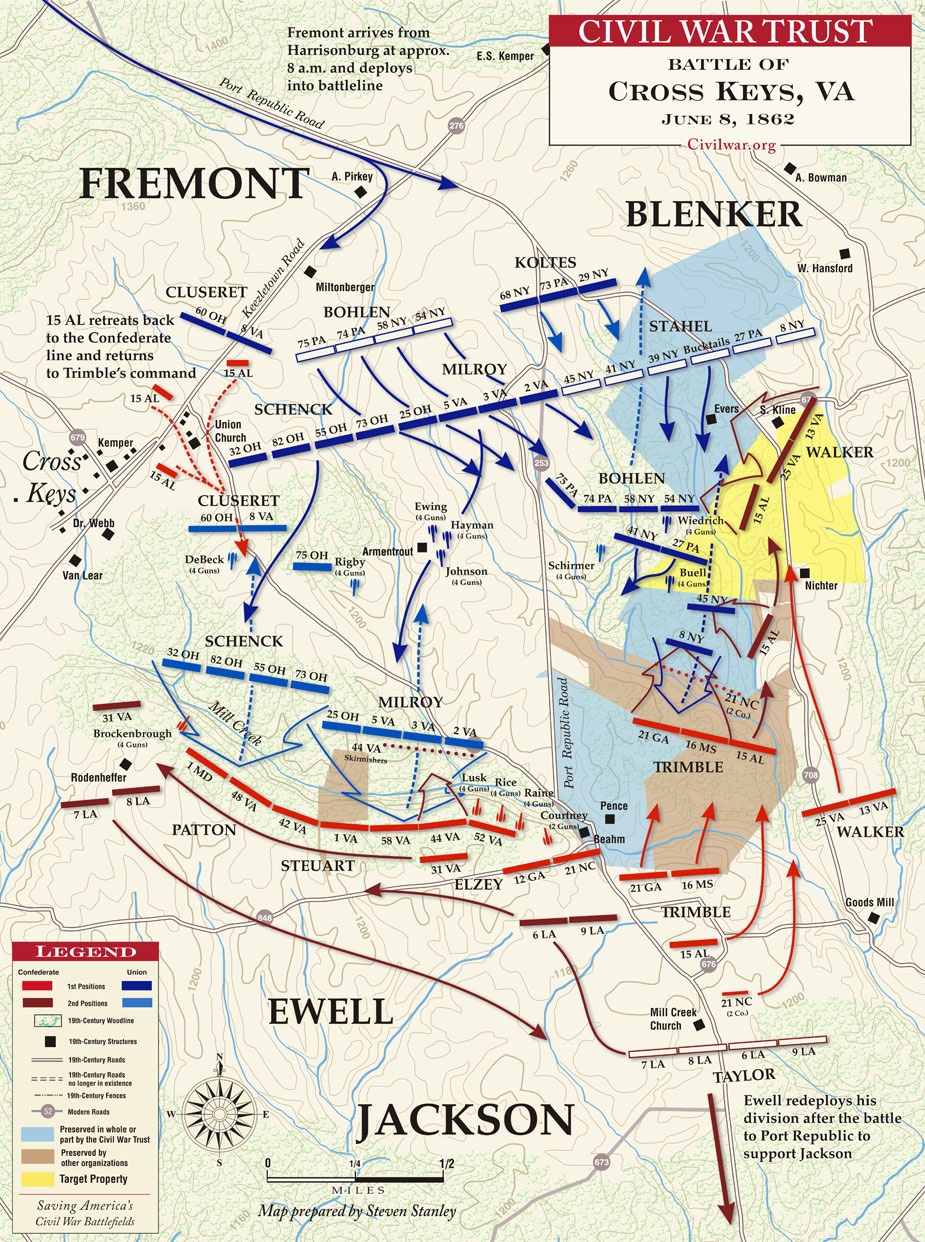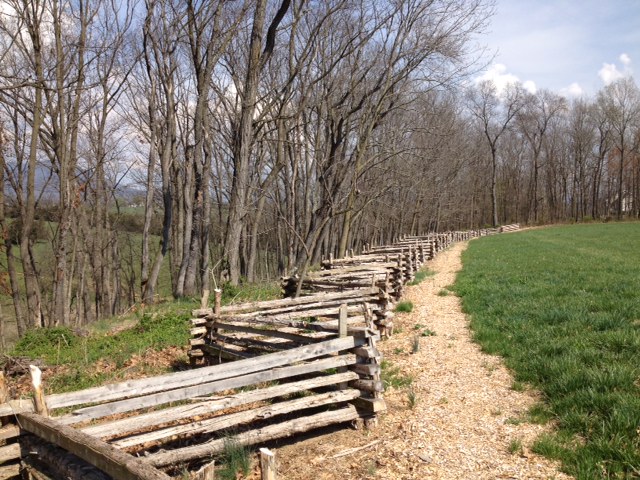The Wounding of the other “Confederate Steuart”
Today marks the 150th anniversary of the Battle of Cross Keys. Along with the engagement at Port Republic the following day, Confederate General Thomas “Stonewall” Jackson repulsed two separate Federal forces. This culminated his highly successful Shenandoah Valley Campaign of 1862.
Information about the anniversary and/or events about these two battles can be found here: http://www.shenandoahatwar.org)
During the engagement on June 8th, General Richard Ewell’s Confederate division beat back portions of Union General John C. Fremont’s forces. On the right of the line Isaac Trimble, an adopted son of Maryland decimated the brigade of General Julius Stahel and continued to use the terrain—proceeding from Mill Run to the right of the Port Republic Road, and up through Victory Hill and effectively flanked further Union positions. This ruined the initial plan of Fremont, who presumed that Ewell’s forces would stay on the defensive behind Mill Creek. By nightfall, Trimble had advanced toward the Keezletown Road.

(Courtesy of CWPT)
As this happened on the right flank, Fremont pushed forward two brigades-under Generals Robert Milroy and Robert Schenck to test the Confederate center and left but with little success.
The brigade on the left of the Confederate line initially was commanded by George Steuart-nicknamed “Maryland” to distinguish him from the more famous Confederate cavalier.

Steuart, a native Marylander, like yours truly, had cast his lot with the Confederacy and had sacrificed a lot in the process-including his wife, home, and friends. He had served in the 1st Maryland at First Manassas, in charge of cavalry for a portion of the Shenandoah Valley Campaign, and now an infantry brigade.
During the action, Steuart was severely wounded; according to one of his staff officers, Randolph McKim, the wound was caused by a “canister ball, which pierced the upper chest and lodged in the back.” However that is just one account. According to another historian, Jack D. Welsh in his book Medical Histories of Confederate Generals, and citing the both McKim and McHenry Howard-another Marylander serving the Confederacy-Steuart was “struck by grapeshot or canister in the muscles of the neck and back, and his collarbone was broken.”

(author collection)
The distinguised Civil War historian Robert Krick wrote in his book Conquering the Valley, Stonewall Jackson at Port Republic that all witnesses agreed Steuart was “hard hit.” Almsot all the accounts also agreed it was canister that caused the wound. One lone account attributed Steuart’s wound to Federal soldiers using explosive bullets but no evidence supports this conclusion. The wound was “in the side of the neck, near the shoulder, the ball ranging over the shoulder and lodging in the muscles of the neck.” Thus, there was no uncertainty of the exact path of the piece of shell/canister/bullet. But, there was unamity that the wound was a “desperately”, or “severely” and/or a “ghastly wound” as described by all accounts including another staff officer that was present at the battle; Captain Frank Bond.
Steuart would be out of active duty for many months, getting the entire piece of canister/shell/bullet removed in August but not returning to field command until after Chancellorsville in May 1863.
This ambiguity of the wound that Steuart received is an example of how this Maryland-born Confederate has fared in the history of the war. His career and achievements during the war, along with being a specific example of the deep divisions that ripped families apart because of the war has been largely forgotten. This author is in the process and determined to rectify this inadvertent slip by historians.
What does not need rectifying is the fact that Ewell’s victory at Cross Keys, coupled with Jackson’s victory the next day at Port Republic, put a successful conclusion to the Valley Campaign of 1862. Jackson had secured for the next two years, the “Breadbasket of the Confederacy.”

(author collection)
Further Reading of the Battle of Cross Keys and Port Republic
“Conquering the Valley” Stonewall Jackson at Port Republic by Robert Krick